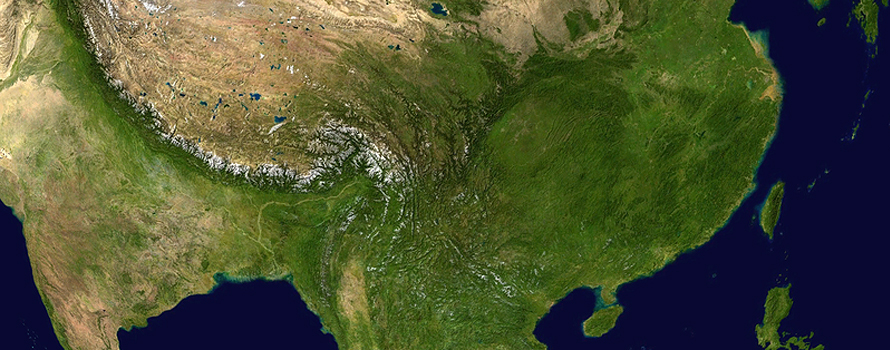It generates many of the raw materials needed for global technology production.
China not only has significant reserves of mineral resources, but also leads the world in the production of many of them. B This gives it a geopolitical advantage as source of the resources essential for global technological production.

▲Satellite image [NASA].
article / Gabriel Ros Casis [English version].
With such a vast territory as the Asian country, it is obvious to think that it possesses a large amount of raw materials and natural resources. Throughout China's history, this has become a strong geopolitical asset, not only for the country's own development but also for its trading partners through exports. Today, when we talk about these raw materials, China stands out in two main groups: base metals and technological elements.
The group of the base metals essentially comprises five metals from the periodic table, these being: iron, copper, aluminum, magnesium and zinc (sometimes lead and tin are also included). There is no need to recall that we can find all these metals in everyday objects, and that they have been the backbone of industry for a long time. Therefore, every country needs them, placing those with the largest deposits of these metals at a strategic advantage. But a country's mineral wealth is not always given by this condition, as it can also be measured by the ease and feasibility of extracting the product. In the case of China, both arguments would be valid, since the country has the largest deposits of many of these minerals, with magnesium leading the way (79% of global extractions) followed by tin (43%) and zinc (31%).
As far as technological metals are concerned, it is important to note that they include various minerals, such as rare earths, precious metals, as well as semiconductors. From a quantitative approach , the required amount of these metals is minimal, even though their availability is crucial for the production of today's technology. For example, some of the most common technology metals include lithium, yttrium, palladium, cerium and neodymium, which can easily be found in cell phone batteries, medicines, magnets or catalysts. Once again, China leads the way with the largest deposits of several of these elements, especially tungsten (83%), followed by rare earths (78%) and molybdenum (38%).
From this we can conclude that China not only has the largest deposits, but is also the world's leading exporter. In addition to extraction, this country also refines and manufactures components with minerals such as aluminum, copper and certain rare earths, and in some cases even manufactures the final product.
Therefore, it must be taken into account that extraction brings with it certain consequences. Environmentally, extraction always has an impact on the land, perhaps less in China compared to other countries (due to the size of its territory), but equally significant. From an economic approach , these extractions entail a great cost, but which, managed in the right way, can generate an immense benefit. In the political scenario, they are seen as an important geopolitical advantage, creating dependence on the demand of other countries.
As a conclusion, it can be drawn from this that China has great power in terms of raw material resources, but this carries with it a great responsibility, since a substantial part of the raw materials used for almost all the world's technology production depends on this country, which provides the resources, but also manufactures them.